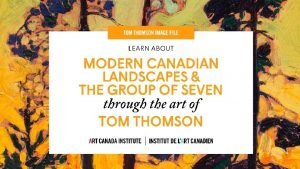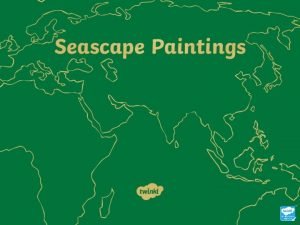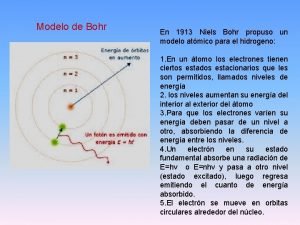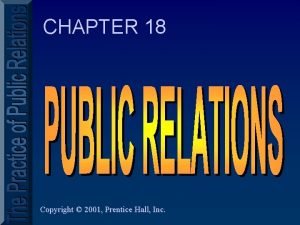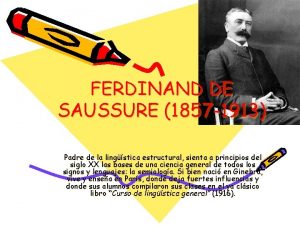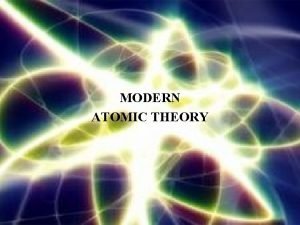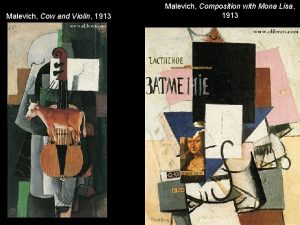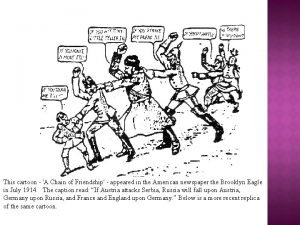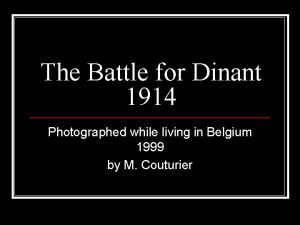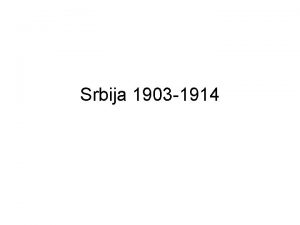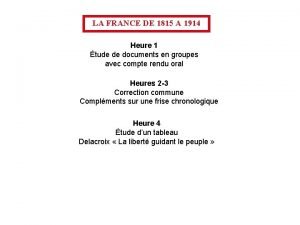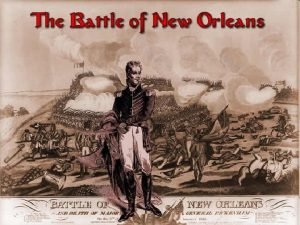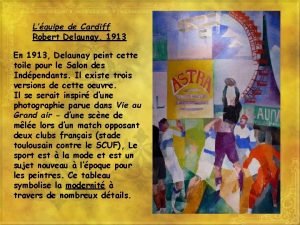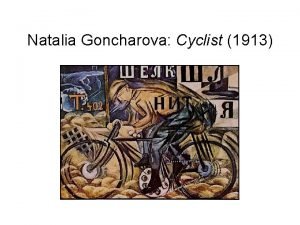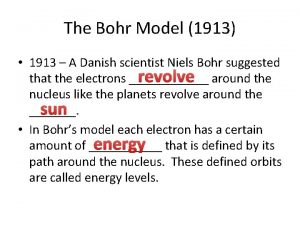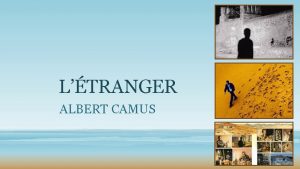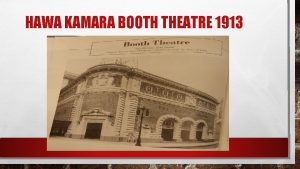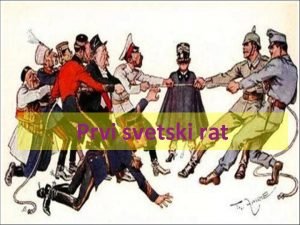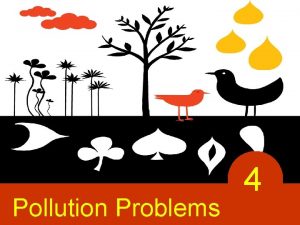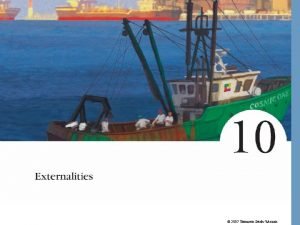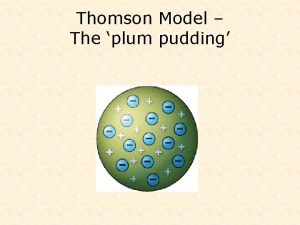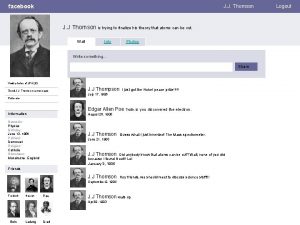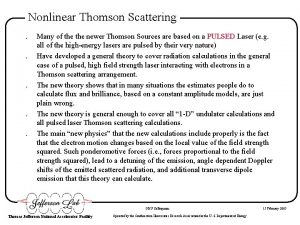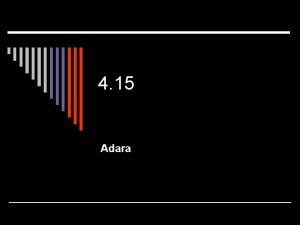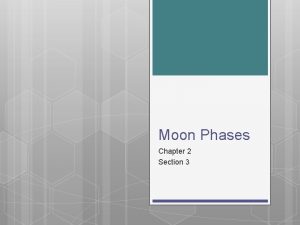Tom Thomson Moonlight 1913 14 In 1914 when
































- Slides: 32


Tom Thomson, Moonlight, 1913– 14. In 1914, when the National Gallery of Canada purchased this painting (their first work by Thomson), Thomson’s friend Lawren Harris was a board member and adviser to the Gallery.

Studio portrait of Tom Thomson as a successful young commercial artist, c. 1910.

Tom Thomson, Hot Summer Moonlight, 1915. Thomson painted this work while in Algonquin Park, most likely while sitting in his canoe.

Tom Thomson, The West Wind, 1916– 17. Isolated and twisted, this pine tree has clearly struggled to grow; it can be seen as a symbol of strength and perseverance.

Tom Thomson, Path behind Mowat Lodge, 1917. This work is a painting on a wooden panel, a type of support that Thomson used many times.

Tom Thomson, Decorative Panel (IV), 1915– 16. In 1915 Thomson began working on a set of decorative panels for the cottage of his patron, Dr. James Mac. Callum. The first set he created included this painting; because the set did not quite fit, it was not installed at the cottage.

A. Y. Jackson, A Copse, Evening, 1918. During the war, Jackson served as a war artist; this work depicts a battlefield.

Tom Thomson, Northern Lake, 1912– 13. The sale of this painting encouraged Thomson to focus on his art.

Tom Thomson in a canoe he painted dove grey, 1912.

Tom Thomson’s sketch box was designed to be easy to use outdoors: he could set it up on his lap and paint anywhere he wished; the box also kept paintings safe while he was travelling.

Learning Activity #1 Tom Thomson, Blue Lake: Sketch for “In the Northland, ” 1915. In the sketch for In the Northland, we can see rough brushstrokes and a limited colour palette.

Learning Activity #1 Tom Thomson, In the Northland, 1915– 16. This work is a large painting based on one of Thomson’s oil sketches.

Learning Activity #2 Tom Thomson, Early Snow, 1916– 17. This work is a striking wintry landscape.

Learning Activity #2 Tom Thomson, Northern River, 1914– 15. A scene in Algonquin Park, this painting does not represent a particularly special location–it is distinctive because of Thomson’s viewpoint and composition.

Learning Activity #2 Tom Thomson, Sunset, 1915. In many of his sketches, Thomson chose to focus on the sky.

Learning Activity #2 Tom Thomson, Approaching Snowstorm, 1915. The overwhelming, dark cloud in this sketch suggests the power of the coming storm.

Learning Activity #2 Tom Thomson, Opulent October, 1915– 16. Thomson was very inspired by autumn, as were many of his friends.

Learning Activity #2 Tom Thomson, Nocturne: Forest Spires, 1916. Thomson painted several night scenes in Algonquin Park.

Learning Activity #2 Tom Thomson, The West Wind, 1916– 17. The white foam on the waves indicates the energy of the wind.

Learning Activity #2 A. Y. Jackson, The Red Maple, 1914. Jackson and Thomson were friends, and in the fall of 1914, the two men went on a canoe trip in Algonquin Park.

Learning Activity #2 Lawren Harris, Above Lake Superior, c. 1922. Harris painted this work a few years after Thomson’s death.

Tom Thomson, Pine Trees at Sunset, 1915. In this sketch Thomson used a combination of orange, yellow, and acid green in the sky, a combination of colours that he returned to when he painted The Jack Pine, 1916– 17.

Culminating Task Tom Thomson, The Jack Pine, 1916– 17. This painting was based on a sketch that Thomson made in Algonquin Park in the spring of 1916.

Culminating Task Poole Brothers, Map of Algonquin Provincial (Ontario) Park, Highlands of Ontario: Canadian National–Grand Trunk Railways, 1922. This map records the presence of many different types of activities and people in Algonquin Park.

Detail.

Culminating Task A. Y. Jackson, Terre Sauvage, 1913. Jackson made sketches for this painting in Georgian Bay before working on the painting itself in a studio in Toronto.

Tom Thomson, Autumn, Algonquin Park, 1916. After Thomson died, this sketch was given to J. E. H. Mac. Donald (1873– 1932), one of Thomson’s great friends and mentors and a member of the Group of Seven.

Tom Thomson, Artist’s Camp, Canoe Lake, Algonquin Park, 1915. Thomson made long trips in Algonquin Park, travelling with a silk tent! He painted his tent at least four times.

Tom Thomson, Cranberry Marsh, 1916. This sketch is notable because of its bold colours and the suggestion of strong light.

Tom Thomson, Early Spring, Canoe Lake, 1917. Thomson painted this sketch only a few months before his death.

Tom Thomson, After the Storm, 1917. One of Thomson’s final paintings, this work is full of rough, loose brushstrokes, to the point that parts of the painting almost seem abstract.
 Tom thomson moonlight
Tom thomson moonlight I could hear hawaii calling my name
I could hear hawaii calling my name Banana
Banana Rembrandt seascape
Rembrandt seascape Ilearn nwrc
Ilearn nwrc Film poster analysis example
Film poster analysis example Tomtom go 910 update
Tomtom go 910 update The devil and tom walker symbols
The devil and tom walker symbols Jekyll island 1913
Jekyll island 1913 Defination of a contract
Defination of a contract September 1913 poetic techniques
September 1913 poetic techniques Federal reserve owned by rothschild
Federal reserve owned by rothschild What percentage of africa was colonized by 1913
What percentage of africa was colonized by 1913 Certainty in contract law
Certainty in contract law Niels henrik bohr aportacion al modelo atomico
Niels henrik bohr aportacion al modelo atomico Ignatius v bell
Ignatius v bell 1913 gillette amendment
1913 gillette amendment Casa de moda italiana fundada en 1913 en milan
Casa de moda italiana fundada en 1913 en milan Ferdinand de saussure (1857-1913)
Ferdinand de saussure (1857-1913) 1913 niels bohr
1913 niels bohr Cow and violin
Cow and violin Rubin stacy lynching wikipedia
Rubin stacy lynching wikipedia Fragment 2 for composition vii, 1913.
Fragment 2 for composition vii, 1913. 1913 niels bohr
1913 niels bohr Ottomaanse rijk welke landen
Ottomaanse rijk welke landen Adolf hitler was born
Adolf hitler was born A chain of friendship cartoon
A chain of friendship cartoon Dinant 1914
Dinant 1914 Srbija 1903 do 1914
Srbija 1903 do 1914 Latviešu gleznotājs 1891-1964
Latviešu gleznotājs 1891-1964 Frise chronologique de 1815 à 1870
Frise chronologique de 1815 à 1870 Karte afrika 1914
Karte afrika 1914 In 1814 we took a little trip
In 1814 we took a little trip
